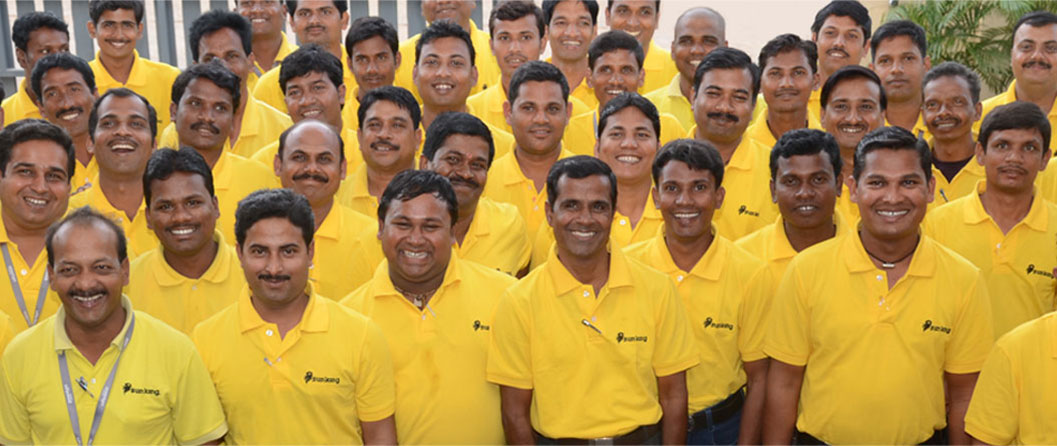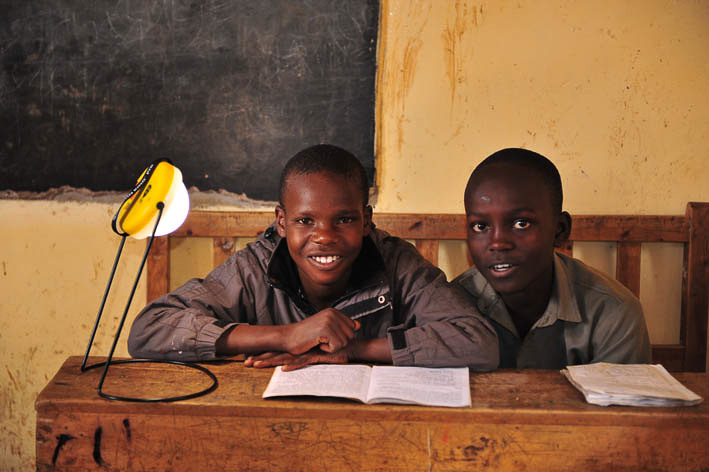NexThought Monday – Solving the Energy Access Problem: In-house distribution + in-house product design
We founded Greenlight Planet to offer rural, low-income families a clean, affordable and safe alternative to traditional kerosene lamps. We developed a robust range of solar-energy consumer products to meet the needs of the 1.5 billion people who live off the energy grid: our award-winning Sun King™ brand of portable solar lanterns and phone chargers.
But we quickly discovered that producing a great product gets you only halfway home.
We needed to get our solar lanterns into people’s hands – no easy feat when the consumer lives off the energy grid, isolated from traditional distribution networks. To address that challenge, we developed a two-pronged approach. Predictably, we developed distribution partnerships with organizations around the world. But, uniquely among our competitors, we in parallel developed our proprietary “Direct to Village” micro-entrepreneur-driven direct-sales network.
It’s going well now, but when we first launched our “Direct to Village” sales concept, it was a real struggle. For years, we agonized month after month over depressingly low sales figures and ongoing agent recruitment problems.
But we believed that direct sales would become a powerful platform for sustainable growth, so we stuck with it. And in the summer of 2011, things started to click. Small areas populated by low-income farmers in northern Bihar started to show promising results. For the first time, our agents began to report multiple new customers per week. We noticed that some of our most successful sellers were becoming local celebrities, based on the visible impact they were having on livelihoods in their communities. And our sales agent count began to skyrocket as individuals in neighboring villages began to see an opportunity to earn money for their own families while doing good for their neighbors. In no time at all, our network grew from 50 agents to 350 agents, selling more than 3,500 Sun King™ solar lights to off-grid families each month. In the next two years, our sales network grew from five district branches to more than 50 branches in three states in India, reaching 3,000 active sales agents and more than 30,000 new homes each month.
As our sales have continued to grow exponentially, we are often asked what has been the key to success. We see our prime advantage as the difficult-to-replicate synergy between our in-house product design function and our in-house direct-to-consumer sales and partnership platforms. The combination of these two functions as core business models, working in tandem within the same company, has proven critical. Each has provided critical inputs to the other, making it difficult to imagine either model having been successful on its own.

(Above: Members of Greenlight Planet’s sales team, which number in the thousands across India.)
Our internal direct-sales network allows us to collect consumer feedback more efficiently and thereby improve our product designs more rapidly. At the same time, our product design capability allows us to quickly tailor our products to both the needs of our sales force and the needs of our target consumer. Thanks to our in-house distribution network, sales of a product can be measured in real time without any delay from a channel partner, letting us immediately understand the consumer’s response. To us, this synergy seems to be critical for companies targeting rural, low-income customers – a consumer segment whose true needs are often misunderstood. As a point of comparison, product designers and marketing teams at a company like Apple can use the staff as a virtual test target for developing new products. But unearthing the unique and sometimes complicated needs, desires and mindsets of the rural consumer is not easy to do unless you’re actually living (and selling) in that environment.
Another way to examine the power of this combined in-house-distribution and product-design model is how well it addresses the challenge of product quality and reliability. For wealthy consumers, product defects and reliability problems are relatively tolerable: Consumers are less risk-averse, and the logistics of repair or replacement is a mostly simple matter. Rural, low-income consumers have little tolerance for a broken product, and will (rightly so) vilify the company at fault in their community. So an organization that both operates its own direct-sales network and designs its own products has a key advantage – any issue with product quality or reliability can be immediately fixed or even replaced. Product reliability problems may not be obvious to companies that sell through multi-tiered, external distribution partnerships. And distributors who lack their own design function may not be able to react effectively to problems, even if they know problems exist. When launching a new product, we can pilot large-scale sales though our proprietary distribution channels before offering the product to external distribution networks. We need not wait for a distribution partner to report a problem before taking action.
When we start thinking of off-grid households not as disenfranchised families but as potential consumers who are empowered to vote directly with their wallets, everything changes. As an organization, we are competing for consumers’ hard-earned income. Products must deliver immediate, honest and measurable value for the family; they have to last, and we, as a for-profit business, must deliver the best long-term customer service.

(Children in rural Africa doing their homework by the light of a SunKing lamp.)
By working to answer big social problems like energy access through distributed entrepreneurship, we have precisely aligned a diverse international team to efficiently deliver value for consumers. This is a powerful mechanism for large-scale, sustainable impact. Families that lived each night without a light bulb are no longer powerlessly waiting for infrastructure, but now have a voice, telling us how they will solve their own energy needs. Because of Greenlight Planet’s combined strengths in product design and last-mile direct distribution, we understand in specific detail why more than 2 million households have chosen Sun King™.
And with that understanding, we see a bright future for the 1.5 billion kerosene lamp users who are quickly gaining access to solar products.
Patrick Walsh is chief technology officer and co-founder of Greenlight Planet.
- Categories
- Energy
- Tags
- distribution, solar, supply chains
